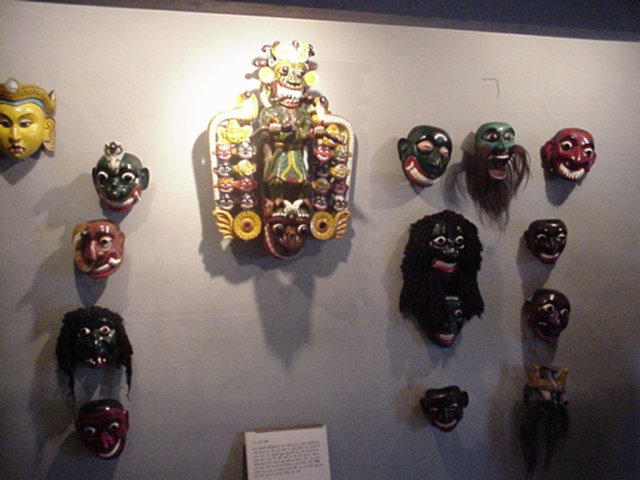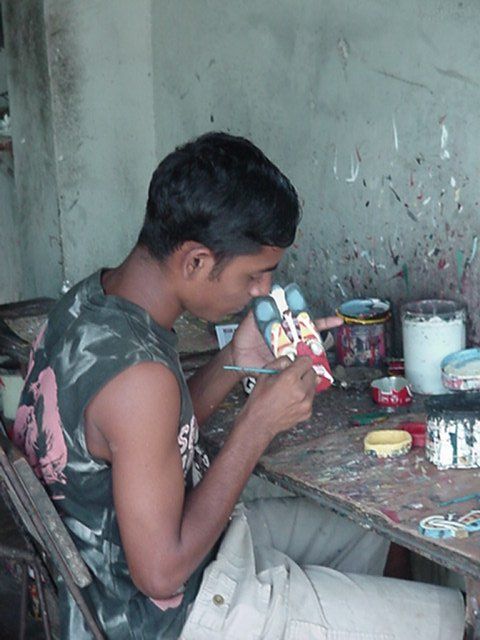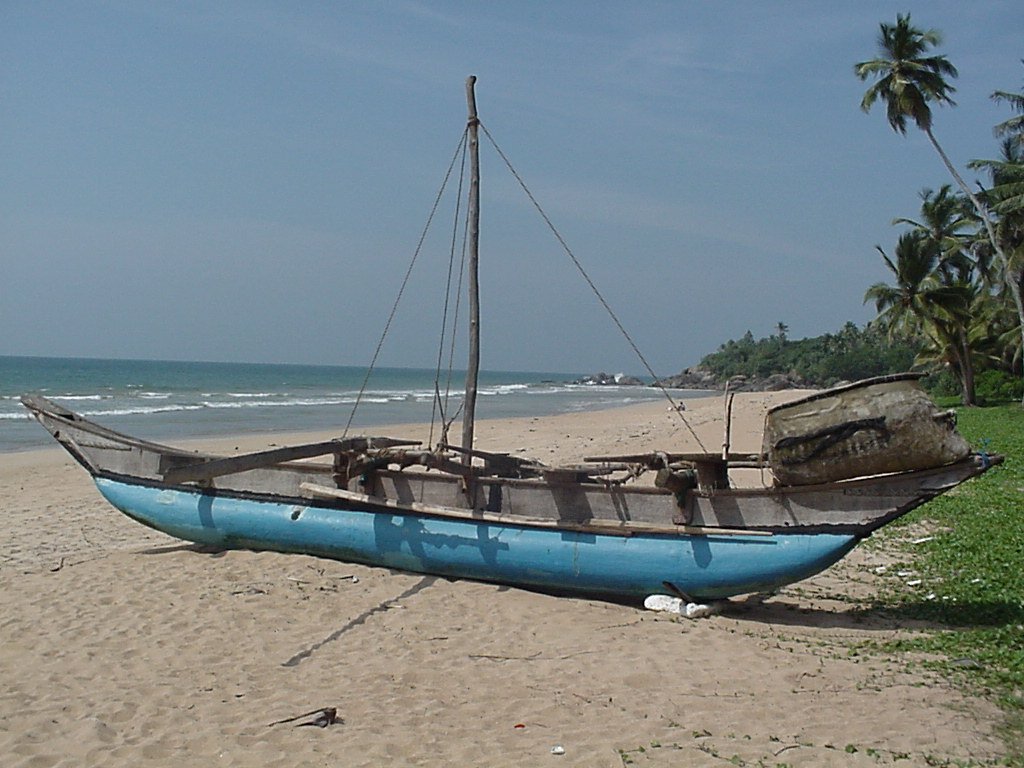Heading
Down the Galle Road


It is about a
four hour drive down the Galle Road from Colombo to the beaches and
resorts of Sri Lanka's southwest coast. Slowly over the years the
volume of traffic has increased the driving time, and the trip has lost
none of its third-world charm. Big lorries vie with vans, busses,
trishaws and oxcarts for the right-of-way on essentially a large
two-way road that often witnesses four lanes of traffic. This is not a
trip for the faint of heart, as your van will careen around a slower
moving (and not necessarily gas-driven) vehicle scant seconds before a
large truck barrels past in the opposite direction. Heading south takes
visitors past many of the popular resort destinations, and the number
of Anglo-looking people (mostly European) increases dramatically around
towns such as Hikkaduwa. It is often convenient to break up this trip,
as much to allow your blood pressure and heart rate to return to normal
as to get a bite to eat.[Update: there is now
a new highway going straight to Galle, bypassing the old Galle Road and
its daredevil atmosphere] On our trip we decided to visit one of
the factories that produce the vividly colored expressive masks that
are famous world-wide. We toured a museum where
 our guide explained the function
of each different type of mask, as
our guide explained the function
of each different type of mask, as  well as the details
that make up the masks. (photo above left) Next we saw where the masks
were being shaped from trees (photo to the right) as well as the
process of decorating the masks (photo at the bottom left). After
touring the mask factory, we resumed our trip toward Galle, pausing
when we reached the first beaches accessible from the Galle Road. The
people of the Galle region make their living as fisherman, putting to
sea in narrow and fragile-looking outrigger boats, such as the one
shown at the lower right. It is arduous and treacherous work; the
Indian Ocean has a wicked undertow, a situation made all the more
dangerous by the fact that most Sri Lankan fisherman cannot swim! In
addition to net fishing from the outriggers, the coast abounds with
fisherman on stilts in the shallows, casting their nets from these
platforms. While tourism is making an impact, most Sri Lankans in this
area continue to live in their small villages on the water, eking out a
living from the sea.
well as the details
that make up the masks. (photo above left) Next we saw where the masks
were being shaped from trees (photo to the right) as well as the
process of decorating the masks (photo at the bottom left). After
touring the mask factory, we resumed our trip toward Galle, pausing
when we reached the first beaches accessible from the Galle Road. The
people of the Galle region make their living as fisherman, putting to
sea in narrow and fragile-looking outrigger boats, such as the one
shown at the lower right. It is arduous and treacherous work; the
Indian Ocean has a wicked undertow, a situation made all the more
dangerous by the fact that most Sri Lankan fisherman cannot swim! In
addition to net fishing from the outriggers, the coast abounds with
fisherman on stilts in the shallows, casting their nets from these
platforms. While tourism is making an impact, most Sri Lankans in this
area continue to live in their small villages on the water, eking out a
living from the sea.

Return to Colombo Main Page

 our guide explained the function
of each different type of mask, as
our guide explained the function
of each different type of mask, as  well as the details
that make up the masks. (photo above left) Next we saw where the masks
were being shaped from trees (photo to the right) as well as the
process of decorating the masks (photo at the bottom left). After
touring the mask factory, we resumed our trip toward Galle, pausing
when we reached the first beaches accessible from the Galle Road. The
people of the Galle region make their living as fisherman, putting to
sea in narrow and fragile-looking outrigger boats, such as the one
shown at the lower right. It is arduous and treacherous work; the
Indian Ocean has a wicked undertow, a situation made all the more
dangerous by the fact that most Sri Lankan fisherman cannot swim! In
addition to net fishing from the outriggers, the coast abounds with
fisherman on stilts in the shallows, casting their nets from these
platforms. While tourism is making an impact, most Sri Lankans in this
area continue to live in their small villages on the water, eking out a
living from the sea.
well as the details
that make up the masks. (photo above left) Next we saw where the masks
were being shaped from trees (photo to the right) as well as the
process of decorating the masks (photo at the bottom left). After
touring the mask factory, we resumed our trip toward Galle, pausing
when we reached the first beaches accessible from the Galle Road. The
people of the Galle region make their living as fisherman, putting to
sea in narrow and fragile-looking outrigger boats, such as the one
shown at the lower right. It is arduous and treacherous work; the
Indian Ocean has a wicked undertow, a situation made all the more
dangerous by the fact that most Sri Lankan fisherman cannot swim! In
addition to net fishing from the outriggers, the coast abounds with
fisherman on stilts in the shallows, casting their nets from these
platforms. While tourism is making an impact, most Sri Lankans in this
area continue to live in their small villages on the water, eking out a
living from the sea.